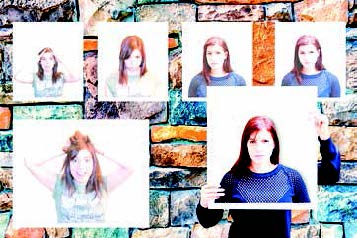This article will outline common signs, as interpreted by body language experts, for reading and understanding people through their non-verbal cues.
We human beings use not only spoken and written language but also body language very often. The reasons for using body language will not be the same between us, for sure. Anyway, to put it simply, we are given to use body language when we dare not speak to anyone straight, when we would like to make our listeners pay more attention to us, or even when we do not want to talk in words.
However, body language usually talks about its user’s inner self or personality to a certain extent. This article is going to describe some common signs of reading people according to body language experts.
Some people listen to anyone else or anything else quite actively just because they are absolutely interesting, whereas others do so only naturally for no apparent reason. Meanwhile, they tend to give an expression of a tilted head, which means active listening. Of course, active listening alone is even better than breaking off if it is probably necessary. As listening is the combination process of hearing and attention, the more attention we show to someone speaking, the more eager he or she will be to speak. In fact, the manner of the tilted head referring to active listening creates mutual respect between speaker and listener.
Some do not like to speak to others face to face. This may be due to the fact that they are shy of, furiously angry with, fear, or look down their nose at the others. Whatever is said, someone should have a serious talk about important matters with someone else head-to-head for the simple reason that eyes speak pretty louder than words as regards one’s very feelings or thoughts while saying something. Hence, body language experts state that direct eye contact creates a desire for a potential close connection with one another or communicative dominance over others. That eye contact still lets us know whether others are interested in our words.
Self-consciousness can be defined as the state of becoming aware of oneself – to be said better, the state of being able to use one’s senses and mental powers to understand what is happening to him or her. Most people are most likely to see self-consciousness simply by the time they do wrong rather than right, especially careless mistakes. However, I am satisfied that self-consciousness is not more advanced in intelligent order than self-reflection or self-actualization. It is also merely a temporary mental state. If a person gains such self-consciousness or finds himself guilty, the behaviour of a covered mouth will almost certainly be shown by him.
According to Oxford, discomfort has three definitions: 1) a feeling of slight pain or of being physically uncomfortable, 2) a feeling of worry or embarrassment, and 3) something that makes us feel uncomfortable or causes us a slight feeling of pain. From these definitions, it can be seen that we may experience discomfort if we are wearing short-sleeved shirts only in the cold. In such a context, folded arms or crossed limbs will be found out. Thus, crossed limbs turn out to be a sign of discomfort. Sometimes, some minor discomfort does not appear considerably on the face but in the above-mentioned sign.
Those who are easily worried, frightened or weak and easily hurt physically or emotionally try to hide their nervousness or vulnerability as usual. Despite this, there is always something that cannot be controlled by them at all. It is nothing but their high-pitched voice. Speaking in a high-pitched voice will have easily frightened off their listeners, they should think. Not only that, raising voices is a form of lying by means of human lie detectors. This form also involves responding slowly to questions, avoiding the question, not denying the accusation, turning down the corner of their mouth, mismatching words and expressions, going on too many tangents, including irrelevant details, and not using personal pronouns.
In some cases, safety is required first, for instance, at construction sites and schools. As the saying goes, the most dangerous area is the safest place, too. Be that as it may, many people cannot put up with their insecurity physiologically or psychologically any longer. At such time, they are increasingly taking their curled-in stance. This also means they are too vulnerable to face their insecurity.
Not all of the above-shown body language is the same in any situation. They might well go differently from field to field and from culture to culture. Suffice it to say that body language is a sort of sign language as well as can be used in the character appraisal of people as an effective and efficient tool. So, let’s read people. Right now!



